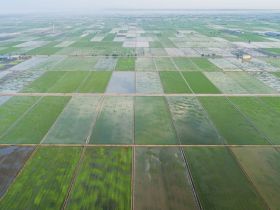Verra rejects China rice methane projects, sanctions companies
Quantum Commodity Intelligence – US-based carbon registry Verra has rejected 37 rice methane projects in China and for the first time imposed significant sanctions against the project proponents and validation/verification bodies (VVBs) involved, the non profit said Wednesday.
The decision concludes an 18-month process and was taken following a quality control review which identified a range of serious issues, Verra said.
These related to:
- insufficient demonstration of additionality;
- projects being designated as small scale;
- project area being overstated; and
- the lack of sufficient evidence to confirm the baseline and project scenario implementation.
The decision was also supported by an analysis of remote sensing data, the registry said.
All 37 projects used the UNFCCC Clean Development Mechanism (CDM) methodology AMS-III.AU.: Methane emission reduction by adjusted water management practice in rice cultivation, which Verra permanently inactivated in its Verified Carbon Standard (VCS) programme in March 2023.
Concerns with the methodology included insufficient guidance for field stratification, a lack of consideration, accounting, or monitoring for changes in nitrous oxide emissions and soil organic carbon stocks, as well as the absence of standardised guidance for conducting methane measurements, the registry said at the time.
Verra had registered 37 projects applying the methodology, of which 25 projects have issued Verified Carbon Units (VCUs) totalling 4.56 million, or 0.43% of all VCUs, the registry said.
Verra said it will also seek compensation for excess issuances of VCUs from project proponents for their failure to meet VCS programme rules and requirements.
VVBs
Verra issued non-conformity reports to four VVBs – China Classification Society Certification Company, China Quality Certification Center, Shenzhen CTI International Certification Co., Ltd and TÜV Nord Cert GmbH – outlining issues identified with their audits of the projects.
All four had been named by Verra when it announced the inactivation of AMS-III.AU as having quality issues related to the validations and/or verifications they had carried out.
The organisations have 15 days to demonstrate a "strong corrective action plan to prevent issues from recurring," the registry said.
If they fail to do so, the VVBs face temporary suspension by Verra to conduct audits of other projects under VCS sectoral scope 14: Agriculture, Forestry and Other Land Use.
"The issues identified with the VVBs are the culmination of an intensive and rigorous investigation and were not taken lightly," said Janice O'Brien, director, auditing and accreditation, in a statement.
"Our quality control review identified serious failures that required a serious response. What we have learned in this process will also support the development of a more effective and credible rice cultivation methodology for future projects."
Methodology
Verra announced the development of a new rice cultivation methodology last December to include robust provisions for guidance for field stratification; consideration, accounting, or monitoring changes in nitrous oxide emissions and soil organic carbon stocks; and standardised guidance for conducting methane measurements.
"The consultation for the new methodology just closed, and it is expected to be officially launched later this year," the registry said Wednesday.
Traditionally, most rice is grown with constant flooding techniques, which produces methane, a very potent greenhouse gas, although techniques such as alternate wetting (AWD) and direct seeding can be used to lower the crop's environmental footprint.
AWD works by draining paddies at certain times during cultivation, which lowers emissions by 40% and does not cause any yield loss to farmers.
However, it involves extra work and resources.
"The new methodology will enable project proponents to credibly achieve emission reductions and generate high-quality VCUs," Verra said.
"The methodology will incorporate clear and concise guidance as well as efficient processes for the determination of additionality, quantification of emission reductions, and transparent data and measurement, reporting, and verification procedures."

